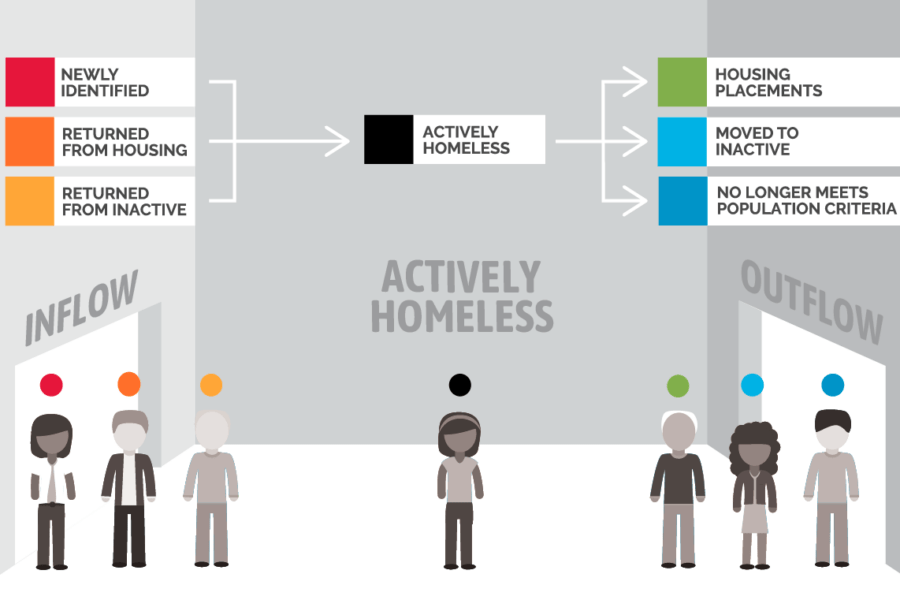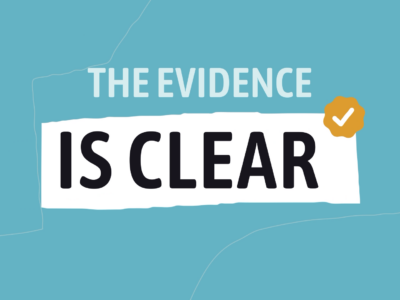We can’t end homelessness among veterans if more enter homelessness (“inflow”) than exit into housing (“outflow”). Appreciating the critical urgency of disrupting inflow into homelessness, Built for Zero partnered with the Urban Institute to understand veterans’ pathways into homelessness and promising strategies for reducing inflow.
Analyzing pathways into homelessness — and how to disrupt them — is as critical ever, as the COVID-19 pandemic creates the conditions for massive inflow into homelessness.
The Urban Institute published a research report on Built for Zero’s pilot with four communities titled, “Community Strategies to Understand and Reduce Veteran Inflow into Homelessness.”
We must prevent flow into homelessness in order to end it.
Communities in Built for Zero focused on ending veteran homelessness strive to reach and maintain functional zero, a sustained reality in which fewer veterans are experiencing homelessness than can be housed in a month. Functionally, this renders homelessness among veterans rare overall, and brief when occurs.
Often, attention on homelessness solutions focuses on outflow, or placing people into housing. But most, if not all, communities cannot reliably and sustainably end veteran homelessness without addressing inflow — preventing people from experiencing homelessness in the first place.
We recognize that reducing inflow into homelessness demands that society moves beyond managing the crisis of homelessness. It requires other sectors outside the homelessness response system to take responsibility for stabilizing people most at risk of homelessness.
Lessons Learned
The Urban Institute report highlighted challenges and obstacles that communities faced in looking further upstream to identify sources of inflow. In our own brief, we named the following recommendations:
- There must be cross-sector accountability structure to bear responsibility for reducing inflow into homelessness. The homelessness response system responds to crises and cannot be solely responsible for stabilizing people in housing, especially when the homelessness response system is accountable for work that drives outflow, helping people exit their experience of homelessness into safe and appropriate permanent housing.
- Policy change and advocacy are critical components of creating a more fertile environment for reducing inflow into homelessness. In a local context, this could look like advocating for changes in data-sharing policies between sectors, lobbying local governments for policies that center tenant protection, and creating policy for more affordable housing within communities, to name a few. We believe that both local and national policy work needs to rectify the harm done to communities that have been most impacted by our country’s history and legacy of racist and oppressive systems.
- Funding streams must be specifically dedicated to inflow reduction work. Communities that participated in the Veteran Inflow Pilot Project discussed the tension between directing funds within the homelessness response system towards reducing inflow, which cannibalizes resources that could be used to drive increases in the number of people exiting homelessness.
- A community needs to have visibility into the number of people who are entering into literal homelessness in as close to real time as possible. Additionally, a community will need to be able to understand pathways into homelessness and to work with upstream systems to share data so that people can be identified before they enter into an experience of homelessness. Good data on inflow into literal homelessness also means listening to and acting on qualitative information shared by people with lived expertise of housing instability and homelessness.




